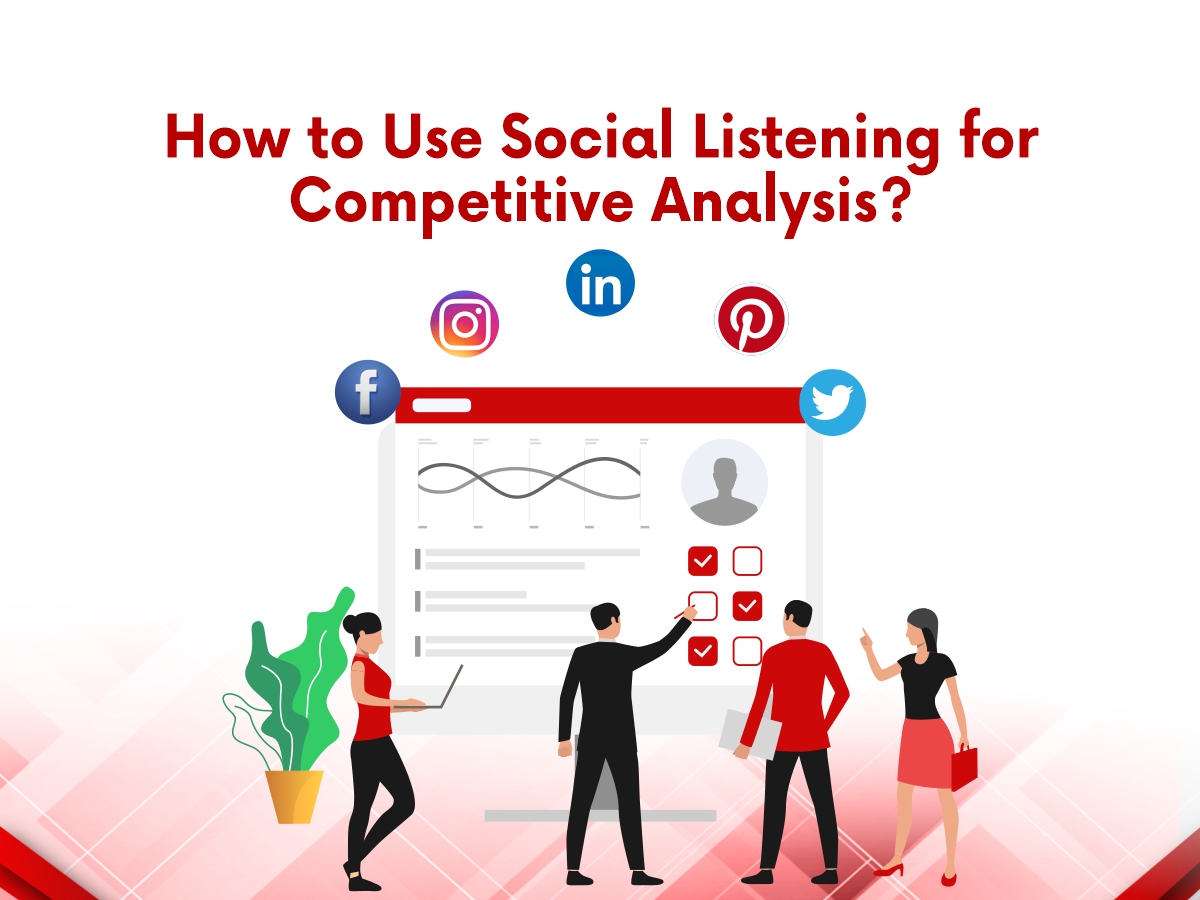
Close


A fundamental rule of business is that you must outperform your competitors if you want to succeed. To stay one step ahead of your competitors, you must be able to analyse and understand what they are doing.
You can conduct a powerful and unique assessment of your competitors on social media and the web by utilising data from a variety of sources and messages (from an article to a formal tweet) as well as vital field monitoring (exhibitions, visits, and business meetings).
To do so, you can use social listening tools. This article will outline how businesses can conduct thorough competitive analysis using social listening.
Competitor Analysis or Competitive analysis simply refers to the process of learning about your rivals. It will be simpler to direct your own brand in the right direction if you are aware of competing companies in your field.
Consider a scenario in which clients conduct online searches relevant to your business, but the majority of them land on a competitor’s website rather than yours. In that case, competitive analysis can help you determine what they are doing well and how you can start attracting some of those leads.
A competitive analysis may involve a range of tasks, such as visiting competitors’ websites, monitoring their search engine results, or examining the content they provide on blogs and social media pages.
Remember that even the best marketers can’t do everything perfectly on their own; thus, to fully maximise your strategies, you can learn from other businesses.
Social media listening, also referred to as “social listening,” is the process of identifying and evaluating online comments being made about a business, person, product, or brand on the internet.
Not just when they’re tagging or discussing your company, social listening lets you understand why, where, and how these discussions are happening, as well as what people are thinking.
By doing so, you can plan out future campaigns, significantly improve your content strategy, outperform your competition, create a strong influencer programme, and even build stronger brand alliances.
In this section, we’ll look at some of the best ways to use social listening to enhance your competitive analysis strategies.
You must first accurately identify your competitors before you can pick up ideas from them. Of course, you’re already familiar with a few of the rival businesses in your industry. Those who were not on your radar can also be discovered through social listening.
Share of Voice is what we term this in social listening. Share of Voice reveals how frequently your company (or that of your rivals) is mentioned in conversations about your industry.
In social media searches of your products or services, which brands come up first? They are the ones with the highest visibility among your target audience, so you should view them as your major rivals.
At the same time, it’s easier to concentrate on the big rivals than on smaller businesses that are more comparable to your own. All business sizes will be included in competitive analysis, and you should focus specifically on organisations operating at your scale.
Depending on your prospects, classify your competitors into the following categories: direct competitors, partial competitors, frontal competitors, and potential competitors. It is meant for segmenting data collection and analysis based on the details of the competition.
Once the data has been obtained, prepare the analysis. Prioritize information according to the significance and threat posed by the rival.
Don’t only rely on conventional sources; do some exploratory watching and talk with consultants or marketers about these potential expression spaces. Identify specialised forums and conversation sites in addition to the well-known and general social networks like Facebook, Instagram, Twitter, WeChat, Pinterest, or LinkedIn: Trip Advisor for hotels and restaurants, for example; Opinion Assurances for insurance companies; Glassdoor for employer brands; Yelp for businesses, etc. Customers can also use comparison and guide websites when making purchases or looking for information. These all serve as different locations where you can find your competitors on social media sites.

Whether it is generic or specific, the information that your competition posts on social media is really useful. Social media will also provide you with extra data, such as consumer or prospect insights, or any online interactions (questions, comments, and opinions) regarding the companies in question. You must pay close attention to the conversational platforms where the customers of your rivals interact, such as forums, social networks, review sites, comment sections of articles, marketplaces, etc.
Since the amount of data gathered can be quite large, we must segment the competitors’ data. As a result, it’s essential to arrange the data according to the topics discussed.
If you have the opportunity to use an efficient social media monitoring tool to analyse the messages based on the themes related to the events, such as awards, capital raises, legal, innovations, R&D, and conferences, and more, you are automatically ahead of the competition.
Some Social Listening tools:
You should keep track of more than just the names of rivals’ companies, their goods, and their executives. This should include sources from your field that may release research and rankings, analyse and contrast your rivals, and identify possible competitors in the future.
You should also find specialists who contribute to forums, attend conferences, write articles about your sector, and publish studies. By doing this, you’ll be able to develop your competitive intelligence beyond a list of your rivals’ names. Twitter and LinkedIn are two prominent social media sites for identifying these subject matter experts. Many experts share their insight and expertise in postings on LinkedIn.
Lastly, don’t confine yourself to your nation or markets; your potential rivals in the future could be from a different nation or industry.
Sorting information using the analysis axes allows one to stay afloat in a sea of it. A report or dashboard that is organised and contains all of these different axes is essential. Depending on the nature of your internal recipient customers, you may need to concentrate on one or more competitors and prioritise a specific form of data.
Competitive Analysis is one of the most vital tools you should use to grow your brand, regardless of the size of your business or industry. Also, social media is a crucial component of almost any online marketing campaign. So, the marketing managers must include a social media strategy in their plan of action to improve the digital visibility and branding of their brands or businesses. Hence, you can augment your competitive analysis techniques by using social listening
Please Subscribe our news letter and get update.
© Copyright 2023 – Wissen Research All Rights Reserved.
Powered by VintageCoders